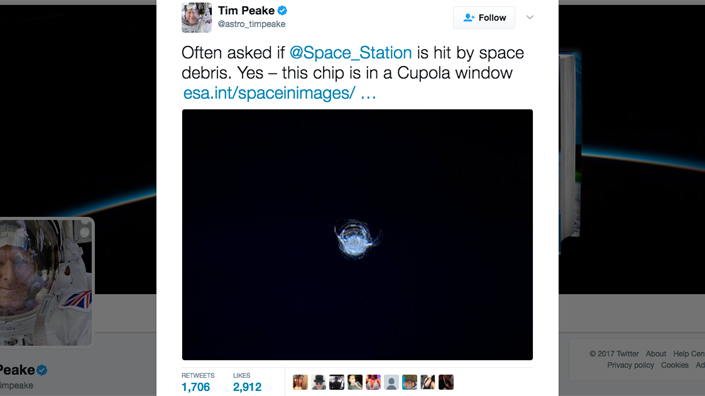Engineering news
Yesterday (3 May) at a US Senate hearing, SpaceX outlined its plan to launch 4,425 broadband-providing satellites, tripling the number of satellites in orbit in just seven years. Patricia Cooper, vice president of SpaceX’s satellite government affairs, said Elon Musk’s company hopes to launch a prototype before the end of the year and begin the full operation in 2019 using its reusable Falcon 9 rocket.
SpaceX says the satellites, which will operate in relatively low orbits of 1,110km to 1,325km, will bring high-speed internet to underserved rural and hard-to-reach areas. The company has also separately filed for another huge “constellation” of 7,500 units even closer to Earth. There are currently only about 1,500 satellites in orbit, although there are thousands of pieces of "large" space debris - bigger than 10cm - and more than 170 million fragments smaller than 1cm.
Speaking to Professional Engineering, aerospace engineer Jason Forshaw from the University of Surrey warned that fast-tracked launch programmes with thousands of satellites carry very high risks. “There is going to be a set percentage of them which are predicted to fail. It may only be one or two per cent, but the question is, what do you do with these satellites?”
If they remain in the atmosphere, the broken satellites could pose a huge risk in cluttered orbits, he said. If any collided, even tiny fragments could cause massive damage to others, potentially starting a dangerous chain reaction. “It might not just be you wiping out your own satellites, you could be threatening other peoples’ satellites as well,” said Forshaw, who is part of the RemoveDEBRIS programme, which aims to be the first mission “harpooning” and netting debris out of orbit.
RemoveDEBRIS plans to release two targets from an experimental “microsatellite” before recapturing them by deploying balloons and extendable arms and taking them out of orbit. The mission leaders hope their demonstration can pave the way for more debris removal projects in the future, aimed at protecting satellites and space missions.
Forshaw said the International Space Station (ISS) is sometimes forced to move out of the way of debris once a month, with British astronaut Tim Peake tweeting a photo of a slightly chipped window after a collision last year. Fuel tanks and solar cells on satellites are particularly vulnerable, with any broken units needing removal from orbit.

Screengrab of Tim Peake's tweet
A SpaceX report says the company intends to “exceed best practice” to ensure safety in space, with plans for its satellites to re-enter the Earth’s atmosphere and burn up after just one year after their five to seven year missions, much sooner than the international standard of 25 years.
However, Forshaw said the risks are still high when such large numbers of satellites are being discussed. “Let’s say there’s one or two collisions up there, you could start filling up these useful orbits where everyone is launching to with even more debris. It is just very risky.”